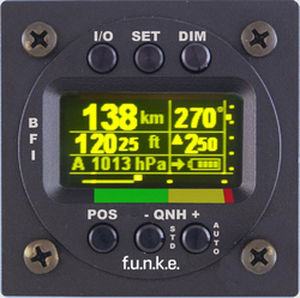
- Components - Spare Parts
- Avionics
- Aircraft TAS
- f.u.n.k.e. AVIONICS GmbH
Aircraft traffic advisory system TM250
Add to favorites
Compare this product
Characteristics
- Domain
- for aircraft
Description
Compact traffic monitoring and warning system in 57 mm standard housing
Complete ADS-B solution in combination with extended squitter-capable transponder (e.g. f.u.n.k.e. AVIONICS TRT800A/H)
Reception of ADS-B position reports via Mode S
Interface for external FLARM® receiver
Easy operation
Proximity warning for all aircraft equipped with Mode S or Mode A/C transponder resp. FLARM®
Acoustic warning by internal buzzer and via external units (e.g. ATR833)
Interface to external standard displays
Low power consumption
EASA Minor Change approval available
The TM250 is aimed at supporting air space surveillance for General Aviation, integrating Mode S, Mode A/C, ADS B, and FLARM®-Detection in one single cockpit device.
ADS-B data from other aircraft are decoded by the built-in Mode S receiver in the TM250. The display of the TM250 indicates the relative position of these airplanes as well as their vertical movement direction. Aircraft whose transponder does not broadcast ADS-B messages are also detected by the TM250. If possible, they are classified according to relative altitude. Approach of such targets is signaled on the display and acoustically.
The TM250 includes a built-in GPS receiver and can transmit its position data via a serial interface to an ADS-B capable Mode S transponder. This makes a complete ADS-B system.
Via a second serial interface, an external FLARM® receiver can be connected to the TM250 which then allows indicating of position and movement direction of FLARM® equipped airplanes on the display of the TM250.
If no FLARM® receiver is connected to the TM250,
*Prices are pre-tax. They exclude delivery charges and customs duties and do not include additional charges for installation or activation options. Prices are indicative only and may vary by country, with changes to the cost of raw materials and exchange rates.




